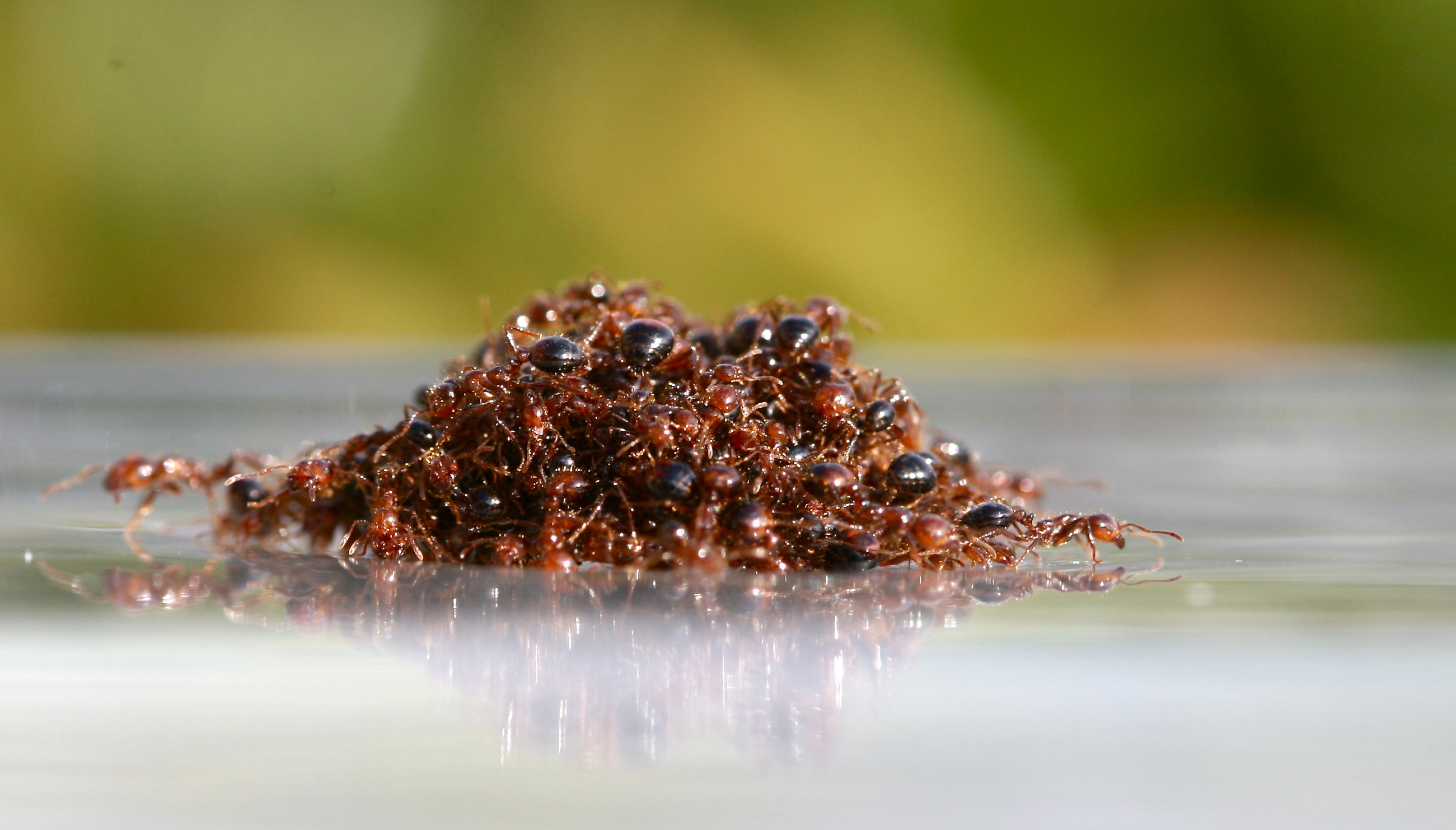
Texans have an added reason to avoid floodwaters brought about by deadly Hurricane Harvey.
Fire ants.
The tiny creatures can bite and sting like crazy when touched, react en masse, and are notorious for being able to survive floods for weeks.
Now they have been spotted in waters around Houston.
Pro tip: Don't touch the floating fire ant colonies. They will ruin your day. #Harvey pic.twitter.com/uwJd0rA7qB
— Mike Hixenbaugh (@Mike_Hixenbaugh) August 27, 2017
Fire ants uprooted by Harvey will cling to each other to make their slightly terrifying rafts. They are searching for dry land – be it a log, a house or even a person.
This is not something people want living in or near their house – even if flood waters mean they are temporarily evacuated.
The sting of a fire ant is characterised by an instant burning feeling which is accompanied by itching and a welt, according to the American Osteopathic College of Dermatology. After four to six hours they turn into a blister which lasts around a week. In the most severe cases anaphylaxis can occur.
 (Georgia Institute of Technology)
(Georgia Institute of Technology)
Initially the rafts can look like heaps of dirt but on closer inspection they are moving and teeming with life.
Fire ants form a protective island as they float out the #Houston flood pic.twitter.com/UBORwAzA4R
— Omar Villafranca (@OmarVillafranca) August 27, 2017
A single fire ant is able to repel water but it’s only when they join together that they make air pockets to keep their water resistant colony raft afloat.
The structure of these fire ants rafts is so intriguing that engineers at the Georgia Institute of Technology have previously spent time studying them.
On average, each ant is connected to 4.8 neighbour ants. With legs, claws, mandibles and adhesive pads each ant has about 14 possible connections.
A CT scan of a frozen raft found that 99% of the ants had all available legs attached to other ants to bolster buoyancy. It also keep the strength of the raft intact through rough currents, such as those in Houston.
Smaller ants fill the gaps between larger ants so the raft maintains stability.
 (Georgia Institute of Technology)
(Georgia Institute of Technology)
Fire ants originated from South America but have been in the US since at least 1918 and are considered a major pest.
The US Department of Agriculture says the insects have had an impact on agriculture and natural resources by “damaging crops, agricultural equipment, and impacting wildlife”.
To break up the rafts, people are advised to use washing-up liquid. The soap stops the ants from repelling water and making air pockets.


Comments & Moderation
Readers’ comments: You are personally liable for the content of any comments you upload to this website, so please act responsibly. We do not pre-moderate or monitor readers’ comments appearing on our websites, but we do post-moderate in response to complaints we receive or otherwise when a potential problem comes to our attention. You can make a complaint by using the ‘report this post’ link . We may then apply our discretion under the user terms to amend or delete comments.
Post moderation is undertaken full-time 9am-6pm on weekdays, and on a part-time basis outwith those hours.
Read the rules here